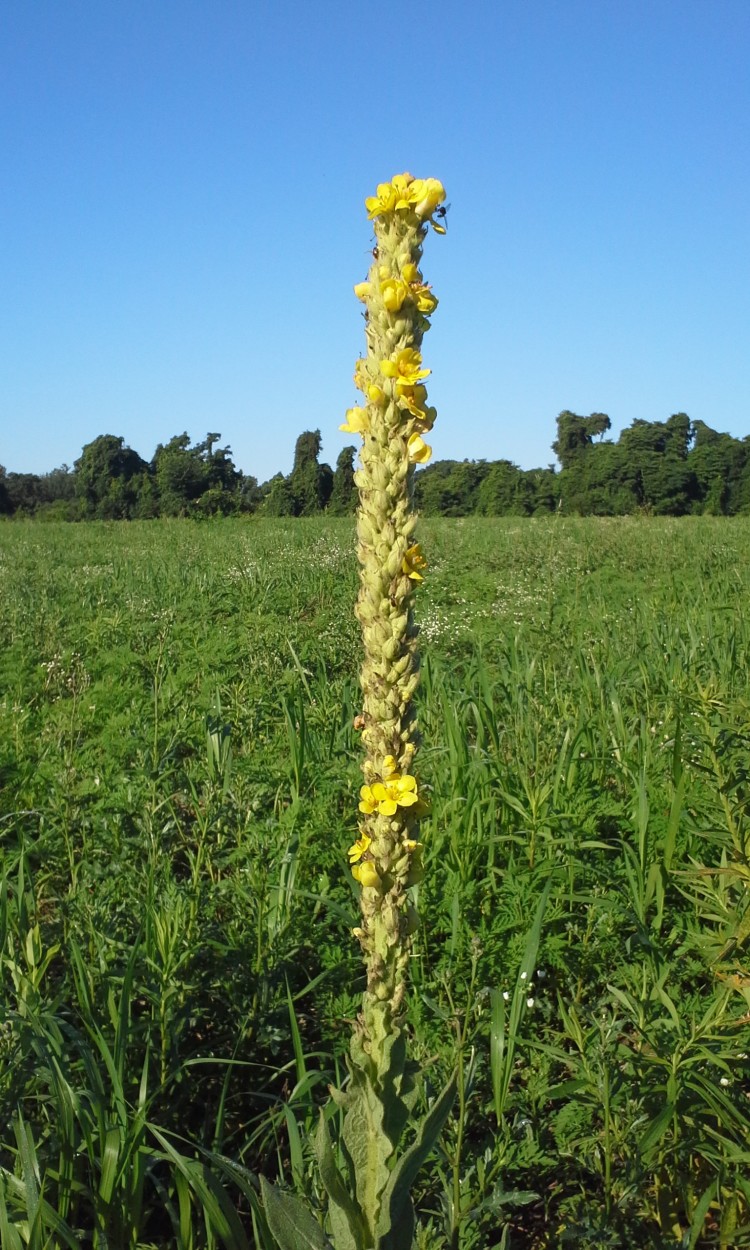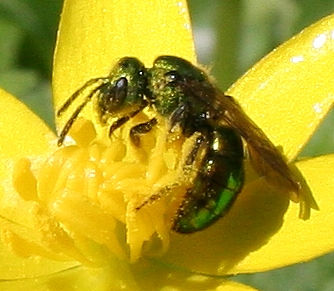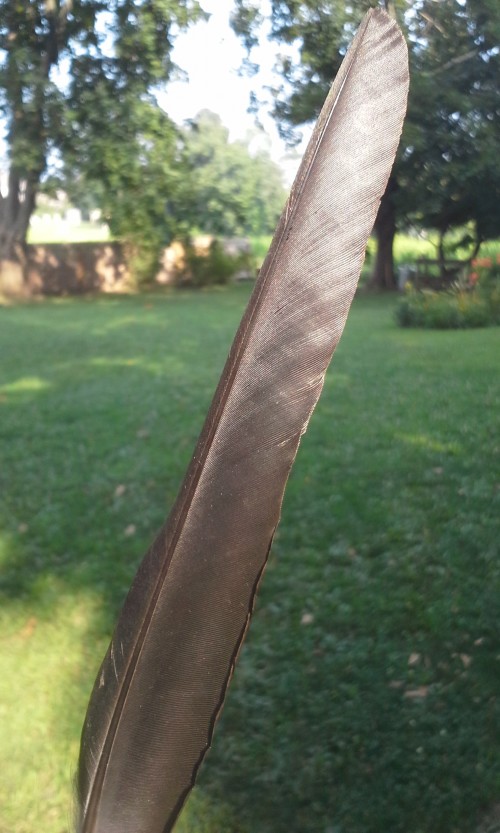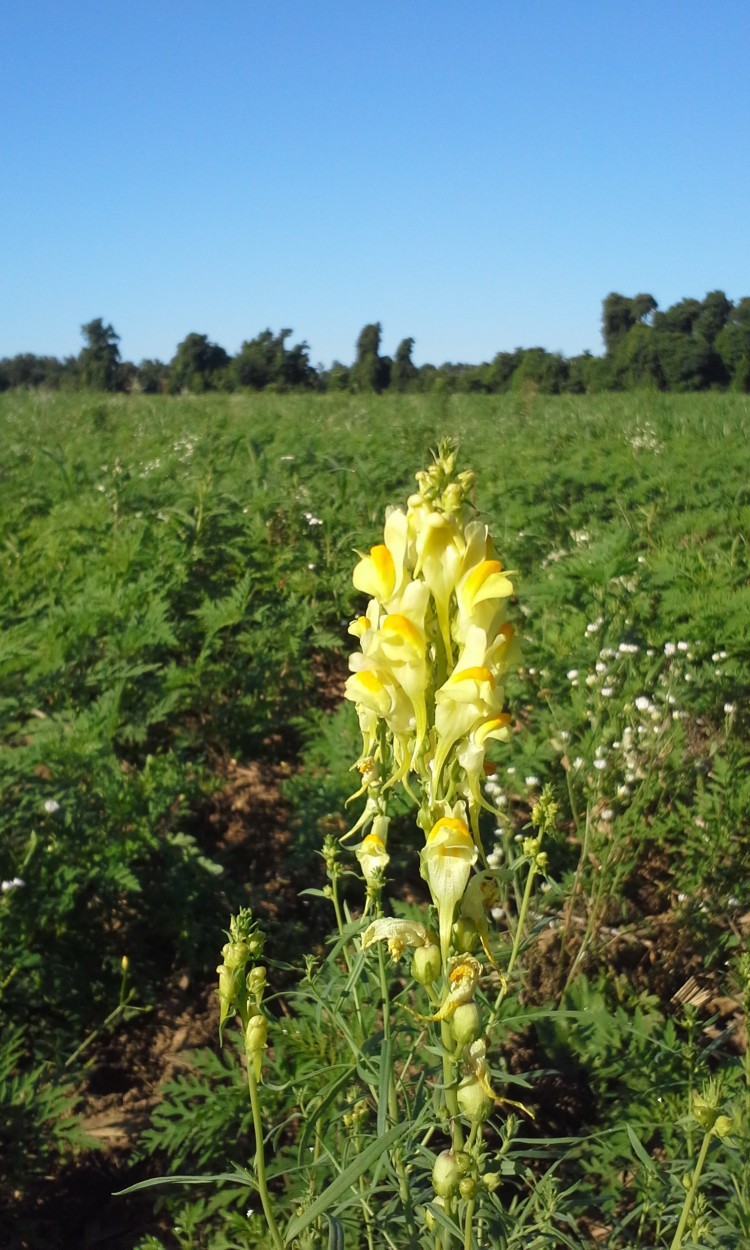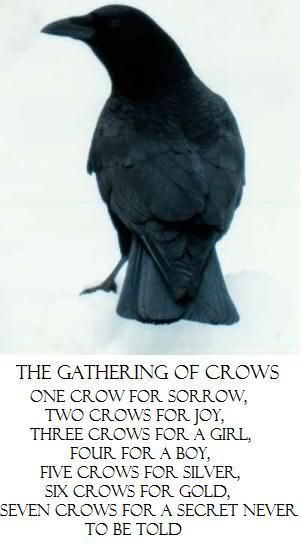The swallows skim close to the surface of the knee high Johnsongrass and thistle, swallowing the insects rising with the sun’s morning heat.
Six weeks after heavy plowing tore the fields apart, they have come back filled with green and with life. However, now about 80% of the ground is covered by either Canadian Thistle, Ragweed or Johnsongrass, plants whose unusually deep root systems give them an advantage in recolonizing disturbed earth. Given time, other flowers and grasses will be able to compete. Pokeberry is coming up, White Fleabane and Blackberry, Carolina Horsenettle and Yellow Nutsedge whose tubers are edible, Wild Coreopsis and Snapdragon and Lamb’s Tongue, their stalks ripe with blooms that look from afar like the towers of a yellow Oz catching the light. There is a scattering of Queen Anne’s Lace in the centers and blue Chicory along the verges.
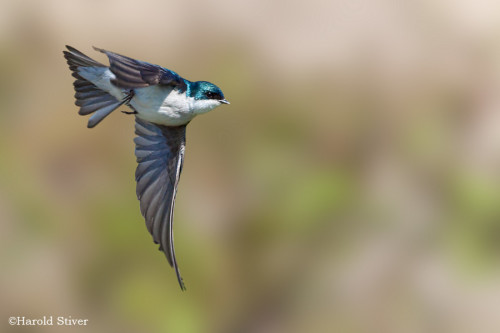 I have seen Field Sparrows and Mourning Doves fly from this cover in the early morning; they rest among the grasses and are known to “roost on the ground at night (730),” sheltered and safe from all but the luckiest fox. The field is too much in the sun for snakes. Field Sparrows are “gentle” and “forage much on the ground for beetles, grasshoppers, spiders.” Sometimes they “sing on moonlit nights (342),” and to add to the sweet wonder of birds, male Tree Swallows “court females in flight” by showing off their “aerial gyrations (867).”* Mourning Doves mate for life; when they fly, they send off a rapid whistling sound whose pitch alters with each wing beat.
I have seen Field Sparrows and Mourning Doves fly from this cover in the early morning; they rest among the grasses and are known to “roost on the ground at night (730),” sheltered and safe from all but the luckiest fox. The field is too much in the sun for snakes. Field Sparrows are “gentle” and “forage much on the ground for beetles, grasshoppers, spiders.” Sometimes they “sing on moonlit nights (342),” and to add to the sweet wonder of birds, male Tree Swallows “court females in flight” by showing off their “aerial gyrations (867).”* Mourning Doves mate for life; when they fly, they send off a rapid whistling sound whose pitch alters with each wing beat.
Tree Swallow
American Hover Flies, nectar drinkers, tiny, come to the few blooms in all this new space, and are accompanied by Augochlora Green Metallic Bees, whose head and mesothorax are as luminescent a green as one sees in fireworks. Daring and Dimorphic Jumping Spiders hunt the broken ground under the foliage. Approached with a stick, they sit on their back legs, mandibles thrust toward the threat, defiant and stalwart, and to escape “run forward, backward and sideways (911).”** No honeybees, no great Swallowtail Butterflies, no web-making spiders, no dragonflies, yet.
Green Metallic Bee
Five deer, two does and three fawns, come out each evening to graze a patch close to the trees. Their coats shine a deep copper-red in western light. They are beautiful.
I picked up one crow’s feather, molted and dropped, seven inches long, a juvenile’s, its long vane smooth and unbroken. No crows to be seen anywhere so I had to imagine a murder of them crossing this morning, and one, dipping its head to watch a feather fall in the cool air — a gift, one more for delight.
*from the indispensable Audubon Encyclopedia of North American Birds by John Terres
** from The Audubon Field Guide to North American Insects and Spiders
